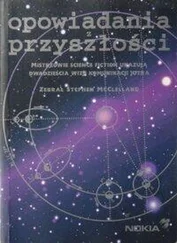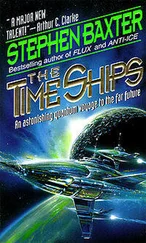The trouble is, antimatter doesn’t seem to be easy to find in nature. Here we’re getting into questions of physics and cosmology. Dirac’s equations were symmetrical—they predicted that equal amounts of antimatter and matter should have come spilling out of the Big Bang in the first place. If so, where is the antimatter? How come we don’t see matter-antimatter annihilation events all around us? As far as we can tell the observable universe is basically just matter, aside from traces of antimatter emerging from natural high-energy events like supernova explosions, which leave signatures in cosmic rays.
The answer seems to lie in the subtleties of high-energy physics and the details of creation after the Big Bang. The laws of physics may not be quite symmetrical after all. A bit more matter than antimatter came spewing out of the Big Bang. A carnival of annihilation followed, filling the universe with a bath of radiation, and eliminating all the antimatter, and all but a trace of the matter. The excess of matter over antimatter had only been one part in ten billion , but that was enough to provide all the matter that makes up the galaxies, stars, planets, and you. This is a nice bit of physics, though the details are far from settled. But for a would-be antimatter rocket engineer all that’s important is that nature seems stingy when it comes to coughing up the juice.
Could we manufacture it? At the moment our only antimatter “factories” are particle accelerators, like Fermilab in Chicago. The antimatter produced by slamming fundamental particles into each other at near-lightspeed inside such machines amounts to around one ten millionth of a gram per year. (And that’s at a cost of around a hundred thousand trillion dollars per kilo! This, you will note, is somewhat higher than unobtanium’s twenty million per kilo, as Selfridge quotes to Grace Augustine.) To make a few hundred tonnes at that rate would take millions of billions of years, a time which exceeds the age of the universe by a factor of… oh, let’s not even go there.
There will clearly have to be a revolution in antimatter procurement to make all this work, and maybe that will come. Antimatter does have some practical applications today, such as in the PET (positron emission tomography) imaging system used in medicine. Maybe that will promote advances in its manufacture and storage. And Robert Forward pointed out that a factory dedicated to producing antimatter could be a lot more efficient than high-energy physics experiments producing it as a by-product.
This is what has been achieved in the universe of Avatar , in which a tremendous particle accelerator on the far side of the moon churns out antimatter in the quantities needed to send Venture Star and its sisters to Pandora—and the reason this giant engine is on the lunar far side is to keep the Earth safe from the huge energies it handles.
Interstellar travel is hugely challenging. For now we can say that we know Venture Star could work in principle, but we don’t yet know how to build it, and couldn’t yet manufacture the antimatter needed to run it. But we do believe it could one day exist, and could take us to Pandora.
And, even though Jake Sully sleeps through the whole thing, the journey itself would be a tremendous adventure.
Interstellar distances are appalling. To scale, the stars are like grains of sand separated by kilometres.
Thomas Henderson, the first man to measure the true distance to Alpha Centauri in the nineteenth century (see Chapter 12), was so shocked by his result that he hesitated to publish it. It will be daunting even for an interplanetary civilisation; the distances between the stars are hundreds of thousands of times the distances between the planets of the solar system.
That’s why the cruise of Venture Star , even to the nearest star system and even moving at a respectable fraction of lightspeed, will take years. And why the journey itself is a significant challenge.
To begin with, Jake Sully’s five years, nine months and twenty-two days is a long spaceflight. The longest human spaceflight to date was by Valeri Polyakov, a Russian cosmonaut who stayed on the Mir space station from January 1994 to March 1995, during which time, endlessly circling the Earth, he travelled some three hundred million kilometres, or around seventeen light-minutes. That’s why the fifteen-strong crew of Venture Star is rotated in three waking shifts of five each, so nobody has to endure the whole journey.
What about life support? Whether you’re on the moon or on Mars or suspended between the stars, there are common technological challenges in maintaining small habitable volumes for long periods, with closed loops of air, water and other essentials. We don’t know how to do this yet; small systems tend to be unstable, as discovered from the “Biosphere II” experiment in Arizona in the 1990s. Today we are running simulated long-duration “missions” on Earth, such as the Russian Mars500 project, in which six Russians, Chinese and Europeans were locked away in steel tanks without resupply from outside for the length of a near-future Mars mission. The “mission” had such real-life features as communications time delays, and a “landing” in which the crew were separated into “surface” and “orbit” teams. Perhaps soon, according to President Obama’s new vision (see Chapter 6), we will be running real space missions to near-Earth objects that could last hundreds of days away from the Earth.
By the time we launch Venture Star we’ll surely have solved these problems. Even so, to survive more than five years, even with their passengers stored in cryosleep, the waking crew of Venture Star will have to manage their resources with almost one hundred per cent efficiency. It is a supreme irony that to reach their interstellar goal the crew, citizens of an evidently supremely wasteful civilisation, will have to become experts at recycling.
They will also have their own health to think of.
The design of Venture Star and its mission must be constrained by human factors. The higher the acceleration during the boost phase, and the longer it can be sustained, the better, as the overall mission time is reduced. But how much acceleration can a human body stand?
Since the arrival of high-performance aircraft and the space age our tolerance of G-forces has been studied by organisations like NASA and the military. Most of us can withstand a couple of G (Earth standard gravities) for short periods. That’s what you would experience on a mild roller-coaster, though some can pull you through as much as five G, briefly. We are most vulnerable to accelerations when we’re standing, because that drains the blood away from the brain; ten seconds at five G leads to tunnel vision and then blackouts. Fighter jets can impose up to nine G vertically, and pilots trying to stay conscious wear stretchy “G-suits” to force the blood up to the brain. Pilots with the highest tolerance are known in the trade as “G-monsters.” You can improve your G-tolerance with training in centrifuges, like the spinning rotor arm on Venture Star , though turning a lot faster. The secret is to tense your leg and abdominal muscles to force the blood to the upper body; you strain, as if you were suffering a particularly difficult bowel movement.
It seems unlikely however that without major re-engineering the human body is ever going to be able to function effectively in gravity fields of more than a few G. You could move around in an exoskeleton like Colonel Quaritch’s AMP suit if you had to, but your cognitive functions would likely be impaired. The RDA designers probably pushed the G load in the boost phases as high as they could. But even to withstand months at Venture Star ’s one and a half gravities, the crew must have been hardened by some serious time in the centrifuge.
Читать дальше










